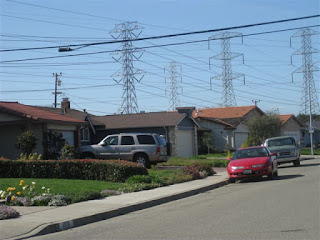Buying a house and living near power lines or electrical substations is a personal decision that depends on your comfort level and individual circumstances. Are there any dangers to living near power lines or electrical substations?
Here are a few factors to consider when making such a decision:
Health concerns: Some studies have suggested a possible link between long-term exposure to high levels of EMF and an increased risk of certain health conditions such as childhood leukemia, brain tumors, or neurological disorders. However, the scientific consensus, including organizations such as the World Health Organization (WHO) and the International Commission on Non-Ionizing Radiation Protection (ICNIRP), is that there is currently no conclusive evidence proving harmful effects of EMF exposure from power lines or substations on human health.
Property value: Houses located near power lines or electrical substations may have lower property values compared to similar properties in other areas. Some potential buyers may be deterred from purchasing a house in close proximity to these structures due to perceived health concerns or aesthetics. However, property values can vary depending on the specific location and local real estate market conditions, so it's advisable to research and consult with real estate professionals for accurate information. According to a 2018 study, vacant lots near high-voltage power lines sell for 44.9% less than equivalent lots that aren't located near power lines. A lot that is located within 1,000 feet of transmission lines tends to sell for 17.9% less.
Electromagnetic fields (EMF): Power lines and electrical substations emit electromagnetic fields. While exposure to EMF is a concern for some people, the strength of the fields decreases significantly as you move away from the source. If you have concerns about EMF exposure, you can hire a professional to measure the EMF levels in the specific area you're considering and determine whether they fall within acceptable limits. If the power lines are more than 300 feet away, there should be no cause for concern. At this distance, EMF from the lines is no different from typical levels around the home. If the power lines are less than 300 feet away from the home, you may want to obtain EMF measurements in the yard.
Aesthetics and visual impact: Power lines and electrical substations can have an impact on the visual appeal of the surrounding area. Some people find them unsightly and prefer a more natural or secluded setting for their homes. Consider whether the presence of power lines or substations aligns with your aesthetic preferences and the overall ambiance you desire.
Distance and property layout: If you're considering a property near power lines or substations, the distance between the structures and the house is a crucial factor. Generally, the farther away your house is from power lines or substations, the lower the potential exposure to electromagnetic fields. Additionally, the layout of the property, such as trees, hills, or other structures, may affect the degree of exposure. Not many people live within 100 yards of a high-voltage power line.
It's essential to conduct thorough research, assess your personal concerns, and consult with relevant professionals, such as real estate agents, home inspectors, and medical experts, before making a decision. They can provide you with more specific information and guidance based on the location and circumstances you're considering.
Some studies have suggested a possible link between long-term exposure to high levels of EMF and an increased risk of certain health conditions such as childhood leukemia, brain tumors, or neurological disorders. However, the scientific consensus, including organizations such as the World Health Organization (WHO) and the International Commission on Non-Ionizing Radiation Protection (ICNIRP), is that there is currently no conclusive evidence proving harmful effects of EMF exposure from power lines or substations on human health.

